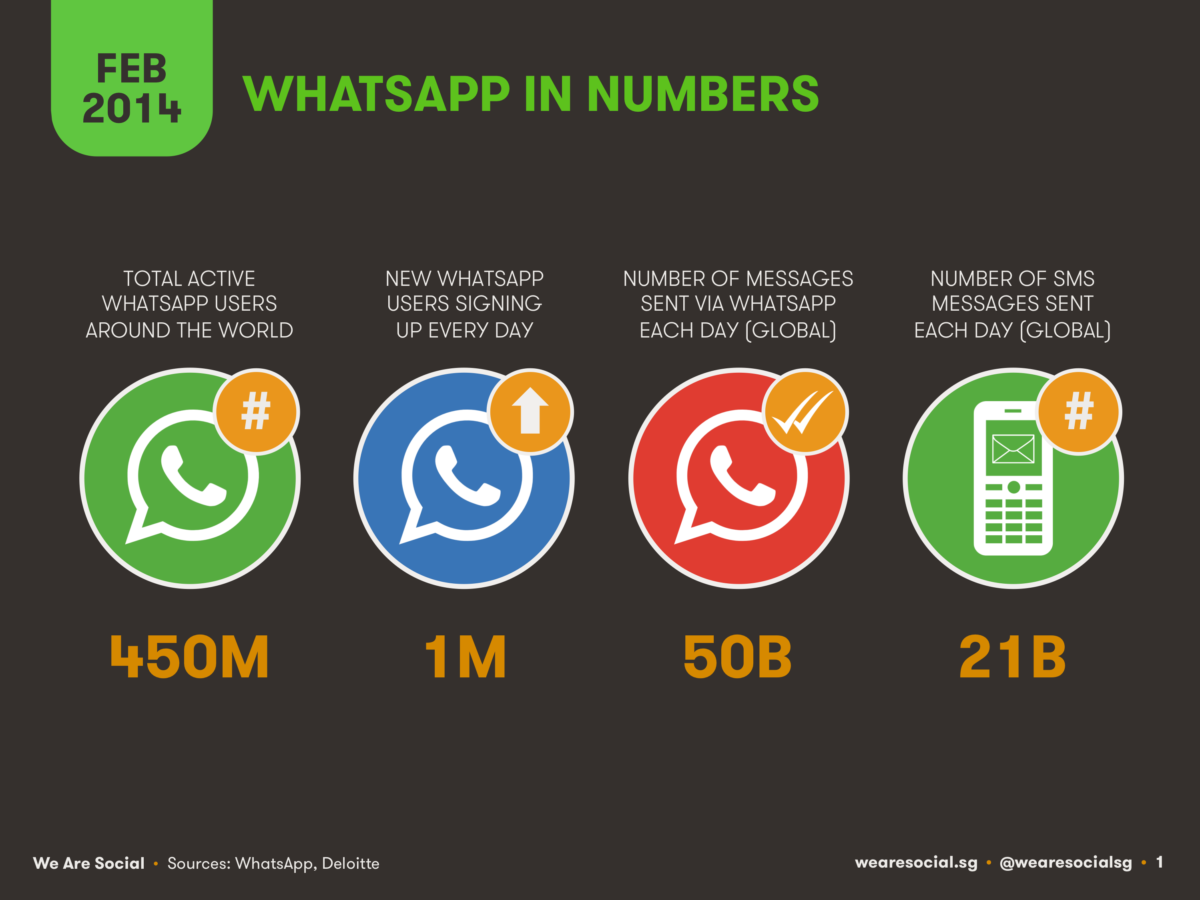Have you ever wondered why Facebook purchased WhatsApp? I asked myself this question the other day and did a little research. It is not exactly today’s news, but it might still be interesting to know.
Background of the deal
WhatsApp was acquired for 19 billion dollars from Sequoia Capital – which is still the biggest Venture Capital exit. In 2014, when WhatsApp was acquired, the second biggest deal was only 3.2 billon (Google acquiring Nest Labs). Mark Zuckerberg certainly was not modest about it either, he commented on it: “No one in the history of the world has done anything like that.” Needless to say, many people were shocked that year about how much money was Facebook willing to pay.
There is also a very ironic story behind this purchase. Brian Acton, the founder of WhatsApp, once wanted to work for Facebook, but he was refused. Fast-forward 5 years, he probably was very grateful that the recruiters at Facebook did not think he was good enough.
What’s in it for Facebook
The acquisition certainly did not happen because Whatsapp was earning a lot of money at the time. In 2014, WhatsApp only generated 10 million of revenue that year. What it did have were the users – 450 million at the time. In the smartphone messaging industry, WhatsApp had the biggest share of users, with Facebook messenger being a close second. Facebook simply wanted to prevent a potential rival to even become a rival. Other reasons included expansion in different geographical reasons and Facebook being afraid to be disrupted by mobile.
After the acquisition, seemingly not a lot changed for the users. Facebook kept its promise to leave WhatsApp as an independent company. Right after the acquisition, Zuckerberg wanted to focus on earning revenue from the WhatsApp users, pondering the option of collecting a fee. As we all know, that did not happen, but the way it turned out is not exactly comforting either – starting with collecting the data about our photos (but there was enough written about that on this site).
Consequences
This deal gave the messaging industry a huge boost. As it turns out, the biggest deal in VC history does give investors confidence about the industry. Incoming funds to the industry increased by 401%.
Sources
http://www.privco.com/privcos-top-10-largest-venture-capital-exits-of-2014ow
http://www.privco.com/mergers-acquisitions/facebook-inc-acquires-whatsapp-inc-february-2014
https://www.cbinsights.com/blog/mobile-messaging-investors-2014/
http://money.cnn.com/2014/02/19/technology/social/facebook-whatsapp/index.html
http://www.businessinsider.com/facebook-rejected-whatsapp-co-founder-brian-acton-for-a-job-back-in-2009-2014-2?international=true&r=US&IR=T
https://www.buzzfeed.com/jwherrman/why-facebook-was-so-terrified-of-whatsapp


